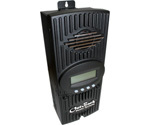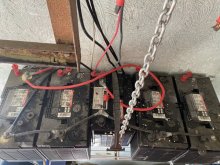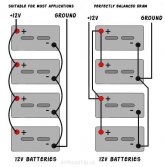RaymondDay
New Member
- Joined
- Mar 2, 2021
- Messages
- 18
Have 3 100 watt panels and 5 deep cell battery's.
I have them wires up like a line + to - and it at 12 volts.
Just have it so it powers my server.
But after time it was messing up the battery's. Looks like over charging them. I had to put more distilled water in them it would like bold it out.
So now just have it on 1 battery and it's working real good with that one. But I like it to use all the 5 battery's got it out in the garage and a thick wire going back to my bedroom were the server is.
So I guess it could not see that the battery's were all 12 volt and keep changing them with 5 as one.
Is there a way to wire them up right for 12 volts or do I have to buy some sync unit or something?
Thank you.
-Raymond Day
I have them wires up like a line + to - and it at 12 volts.
Just have it so it powers my server.
But after time it was messing up the battery's. Looks like over charging them. I had to put more distilled water in them it would like bold it out.
So now just have it on 1 battery and it's working real good with that one. But I like it to use all the 5 battery's got it out in the garage and a thick wire going back to my bedroom were the server is.
So I guess it could not see that the battery's were all 12 volt and keep changing them with 5 as one.
Is there a way to wire them up right for 12 volts or do I have to buy some sync unit or something?
Thank you.
-Raymond Day







